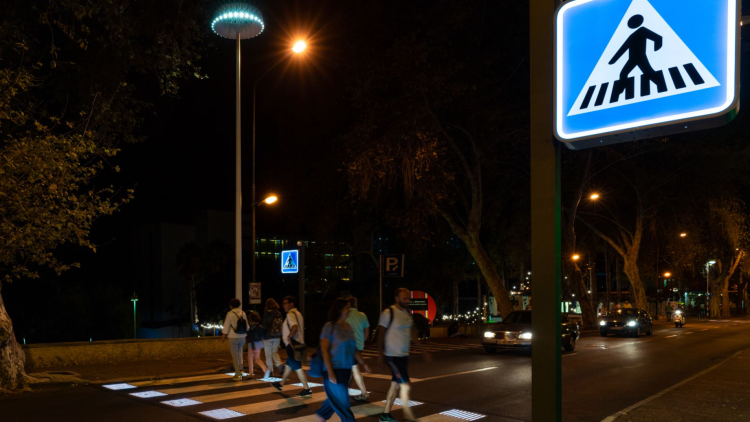Funchal: Innovative light-up pedestrian crossings implemented

The Challenge
The limited accessibility for people with disabilities to the services offered in urban spaces, due to the existence of several urban barriers spread in the built environment is one of the main issues in Funchal. Due to these factors, the areas located in the city core are gradually losing their attractiveness.
The Municipality outlined a target area that is marked by a high density of “horeca” activities that fosters pedestrian activity, especially during the night period. Besides the lack of accessibility, additional issues were identified, namely:
- Obsolete lighting system with reduced luminescence leading to a sense of insecurity and lack of attractiveness;
- Occurrence of accidents involving pedestrians;
- Lack of traffic calming measures putting at risk pedestrians; and,
- Negative externalities, namely noise nuisance and greenhouse emissions.
The Solution
In order to tackle the identified issues, the Municipality implemented a solution that consists of deploying LED strips into the ground at a pedestrian crossing, close to the public transport interface as well as being near to a sought area by pedestrians and tourists. The integrated system that was implemented near the crosswalks is comprised of public light that is powered using renewable sources of energy and connects the crosswalks through LED sensors that are activated when pedestrians are detected. These road markings have the purpose to warn drivers that pedestrians intends to cross. The system is only active during night, and was deployed in areas that are the busiest within the target zone, near restaurants, pubs and hotels. The system integrates several modules, namely video capture, energy performance optimizer and a Wi-Fi network.

Making an impact
Following the implementation of the measure, it was possible to assess the following impacts:
- Decrease of road accidents leading to a strengthening of road safety in the target area. Road accidents decreased by 69% in the trial areas;
- Increase of urban attractiveness and boost of pedestrian flow. Pedestrian trips increased by 191% in the trial areas;
- Carbon neutrality through the transition towards renewable energies;
- Reinforcement of security;
- Availability of video feed in real time and data collection;
- High level of transferability potential to other area; and,
- >20% reduction in perceived barriers to active travel.

Lessons learnt
For a successful implementation, cities should pursue the following:
- Development of a thorough site assessment through data collection and urban audit to identify opportunities and constraints in the intervention area;
- Ensure political support in which the strategy should be aligned with European guidelines;
- Foster stakeholder engagement in order to ensure receptiveness and support;
- Collect data to properly assess the impact of the measure; and,
- Outline a communication campaign geared at several target groups promoting the advantages of the system.







